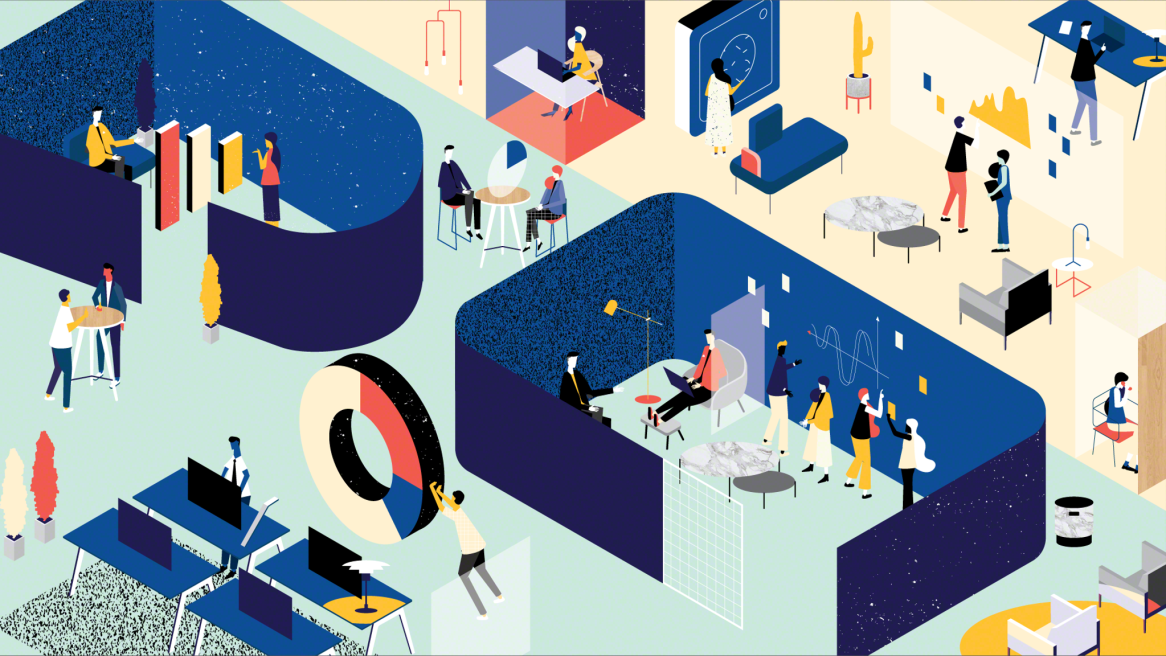What Fast-Paced Teams Want
Teams need their workplaces to shift from fixed to fluid to keep up with the flow of work.
Teams today don’t just collaborate—they hyper-collaborate. They bounce from activity to activity, work moving from one person to another and back again. Inspired by design thinking and agile methods, these teams use rituals like brainstorms, pitch and shares, stand-up meetings and sprints to structure their work.
The intense nature of what they do means with each new activity or work mode, they have to move—searching for the right people and the right space to get their work done. But, what if they didn’t have to? Imagine—instead of people moving when they need to focus or collaborate, they have the option of staying near their team and moving their furniture to create the space they need?
ADAPT SPACE ON DEMAND
Discover how to create dynamic team neighborhoods that let teams and individuals reconfigure their space in minutes.
To understand what teams expect and need from their work environments, Steelcase researchers observed creative and high-tech multi-disciplinary teams in North America, Europe and the Middle East starting in 2017. They found teams need a sense of shared purpose, cohesion and identity to be able to successfully work together and build on each others’ ideas.
According to Steelcase researchers, companies should consider these three things to help their teams excel.
Build a Home for Teams
The role of team space is bigger than just supporting the work itself. It’s also about the human dimension.
- Space “Feels Right”: The team space should reflect and encourage the type of practices and working style of the team.
- Build Trust Together: By building something or “cooking” together, teams foster a sense of identity, cohesion and trust.
- Introduce Playfulness: Playful interactions help teams challenge concepts by inspiring new ways of thinking and testing unusual approaches.
Flex Space to Process
Teams need a dynamic space that keeps up with their process and keeps them in flow.
- Adaptability & Immediacy: The space should let teams in rapid cycles reorganize in a natural, spontaneous way.
- Showcase the Flow: Teams need a place to create a ‘stage’ where content is curated and prioritized.
Empower Teams
Teams need control over their environments to cope rapidly with individual preferences and project needs.
- No Wait Environments: Changing current space and furniture should be addressed like a software request—it’s what’s needed to move a project forward.
- Tweak Space to Personal Preferences: Empower teams and individuals to make quick adjustments to their space on demand.
- Shifting Role of Facilities: Easily adaptable neighborhoods allow facilities management to act as advisors instead of gatekeepers.
“During this project, we worked as a multi-disciplinary team ourselves, learning some of these lessons first-hand. We discovered what a wide range of needs teams have,” says Vanja Misic, user experience lead, Steelcase WorkSpace Futures. “Any potential solution has to consider teams at a variety of different stages of development and give the opportunity to be highly modular.”
Informed by research and inspired by high-performing teams, Steelcase designers created Steelcase Flex—a collection that creates dynamic team neighborhoods that can be adapted on demand by teams and individuals.
Explore how Steelcase Flex supports different types of teams.


